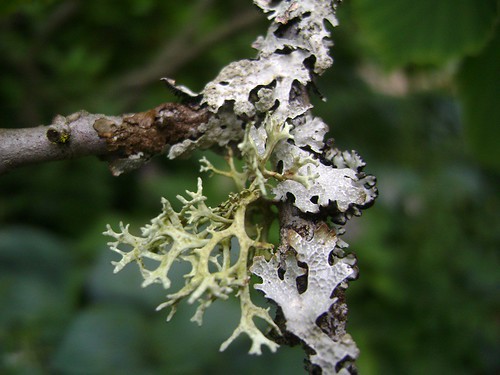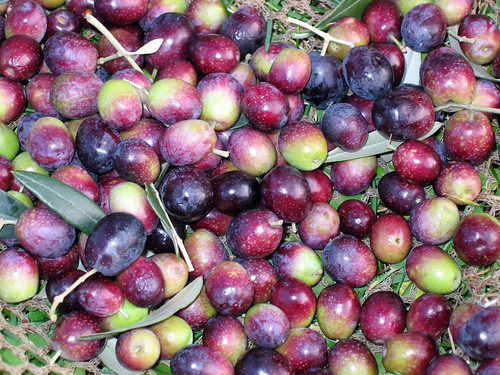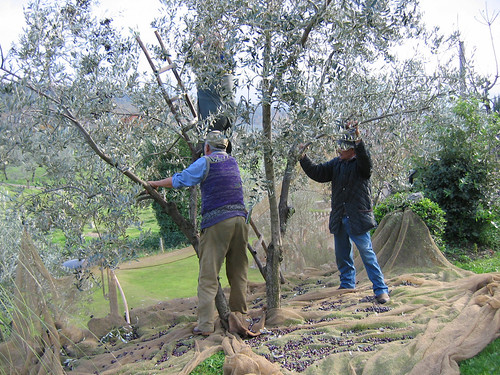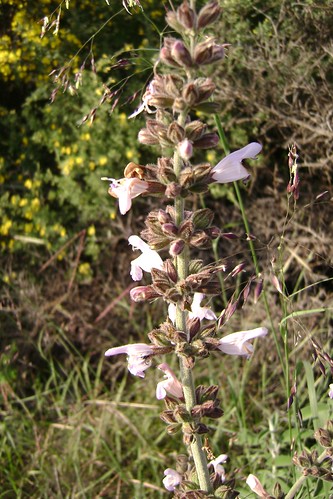 Flowering Sage, originally uploaded by Ayala Moriel.
Flowering Sage, originally uploaded by Ayala Moriel.
Climbing up the mountain called "Abaya" fills your lungs with clean, dry air that is redolent of oak leaves, arbutus berries, and the stronger and more prominent presence of sage, labdanum and hyssop bushes that rub against your legs with every step. In different seasons, the intensity of those odours varies. In the winter, the musty and refreshing scent of wet soil and newly wild weeds make the air feel clean and pure. Rockroses usually bloom in the winter, but their scent is nothing to write home about (there was none last time I checked).
In the spring, the sage blooms, as well as thorny bushes from the broom family, that fill the air with an intoxicating yellow aroma of wild flowers and honey. This makes for quite an intoxicating hike up the mountain trails and possibly induce a headache or a trail of sneezing: the air is over-saturated with yellow pollen (you can see these in the blurry background of the blooming sage photo above).
By the time spring is over, the weeds and grasses are promptly dried up into a muted-coloured straw, and the sun becomes so strong it overheats the ground and the grass, releasing a scent that you would't think could be there. Even the rocks have a scent and it rises up to the air and radiates heat and a spicy warmth. This aroma lingers till fall time, because even though it's still positively sunny - the sun is just a tad more gentle and graceful. The aroma of sun-baked flint and sediment rocks, some covered in dead moss, and of wild herbs (hyssop, sage, thyme and white mint) that set roots in the rocks cavities or grow with less restraint in the small meadows of the mountaintops - they steep into the air like tea...
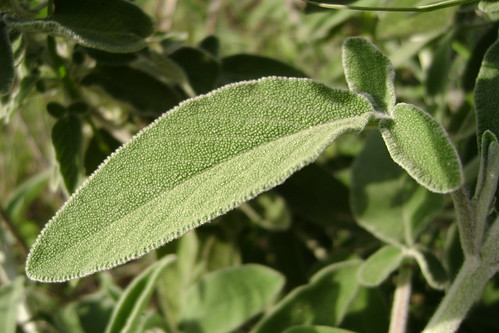
This is just an experience you associate with the mountains and hills of the Mediterranean, but does not have a name in our language whatsoever. But as it turns out, there is a name for it in French (this language is particularly descriptive and precise when it comes to the senses). And so, the 6th part of our Aromas of Autumn Series is dedicated to Garrigue, a term that is new to me. I became aware of it thanks to one of my customers and SmellyBlog readers known as odysseusm.
 Zaatar, originally uploaded by Ayala Moriel.
Zaatar, originally uploaded by Ayala Moriel.
In our region, we eat, drink and breathe garrigue... For example: the za'atar bread is a flat bread similar to pita or cheese-less pizza, that is covered with a mixture of wild hyssop, thyme, sesame and sumac mixed in olive oil.
Garrigue is resinous, warm, earthy spicy aroma, herbaceous in part, and I suspect greatly impacted by the presence of cistus or rockrose on the mountains. Garrigue perfumes are those who got a prominent cistus and herbal presence - such as Song of Songs, Ayalitta and Autumn. The latter two are Chypres and both with sage. The first one is an oriental, but with so much labdanum that once applied to the skin, and especially the anointing body oil - makes my entire being smell of sunbaked mountainous rocks and roses.
Garrigue wines are redolent of baked earth and warm herbs and are full-bodied and aromatic. So it is only fitting that the winery in my village is called Abaya Winery. Winemaker and founder Yossi Yodfat explained garrigue to me as "a combination of thyme, sage, "kida" (these are the broom-related bushes mentioned earlier), "ela" (mastic), and some difrent kinds of grass. The scent changes with the season, and its more green and fresh in the winter, more herbal in the spring, and more dry, and sharp (like dry grass) in the summer".

Copyright Yossi Yodfat/Abaya Winery
Abaya Winery uses only grapes grown in the region and are suitable for the drought conditions, warmer and shorter winters, lower elevation and close priximity to the sea. They use grapes such as Sirra and Carignan. Yossi himself is a lighting designer and involved in the art community. So the space, built just next to a Medieval fortress (Mivtzar Yechiam) is used beyond winery functions - it is also an art and culture centre, and they promote emerging artists. For example: a young visual artist, Noam Dehan was commissioned to design the wine labels. Each vintage has a new set of labels.

Copyright Yossi Yodfat/Abaya Winery
Abaya's wines are red, strong and full of character. Moon-A 2008 is squeezed from Sirra, Cabarnet Sovignon and Petit Verdot grapes, aged 12 months in French oak barrels to produce a soft body, balanced acidity, and pronounced yet not overpowering woody presence and an even diffusion on the palate.
Le Rouge 2008 is made from Cabarnet Sovignon, Carignan and Petit Verdot grapes, and is also aged for 12 months in French oak barrels. This wine has a burgundy colour, a stable body, high but not exaggerated acidity, and a non-overpowering woodsiness. It is an elegant wine that is very suitable for accompanying meals.
Midsummer's Eve 2007 combines Carignan and Sirra grapes with a little bit of Cabarnet Sovignon. "It reminds me that summer scent of dry grass and summer fruits", Yossi explains how he picked the name for this limited edition wine (there are just a few bottles left). It's a massive, thick wine with deep, nearly opaque burgundy hue. It has the sweet aroma of ripe fruit, roasted coffee and earth. Rich and with a hint of spicy clove. It is warming like a midsummer's eve.

Copyright Yossi Yodfat/Abaya Winery
 You're invited to read my last edition for News from the Nose: Autumn Aromas & Fall Fragrances.
You're invited to read my last edition for News from the Nose: Autumn Aromas & Fall Fragrances.









